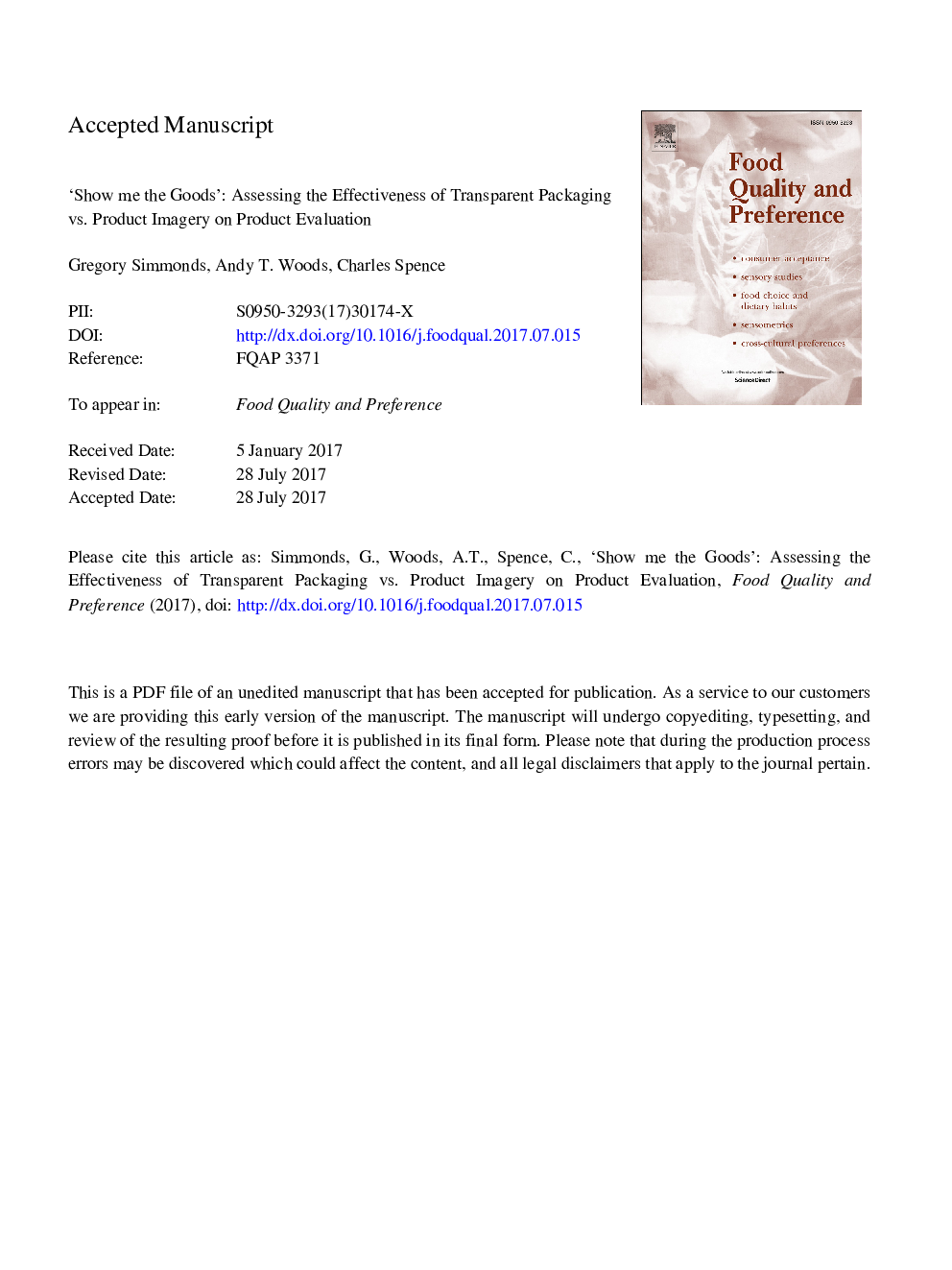| Article ID | Journal | Published Year | Pages | File Type |
|---|---|---|---|---|
| 5735931 | Food Quality and Preference | 2018 | 39 Pages |
Abstract
Transparency in product packaging is appearing more frequently in the food/drink marketplace. That said, relatively little is known about the impact of seeing the food/drink within (as compared to more traditional opaque packaging designs) on product perception or consumer purchase intentions. The research reported here was specifically designed to address this important issue. Participants in an online experiment provided product evaluations of food packaging designs shown visually, as well as rated their willingness to purchase the product, across four product categories. This experiment compared packaging designs with: a transparent window, an image of the product on opaque packaging, or plain opaque packaging. Efforts were made to maximise ecological validity using 'mock-up' brands (that do not exist in real life) in order to avoid familiarity effects or bias from prior experience. The results highlighted the fact that transparent packaging increased willingness to purchase, expected freshness, and expected quality, as compared to packaging that used food imagery instead. In addition, participants expected the products to be tastier, to be more innovative, and were more liked overall in several of the product categories that were assessed. Mediation analyses suggested that transparent windows on product packaging can lead to increased willingness to purchase through a variety of means differing by product category. The implications of this research for brand managers, marketers, and public health researchers are discussed.
Related Topics
Life Sciences
Agricultural and Biological Sciences
Food Science
Authors
Gregory Simmonds, Andy T. Woods, Charles Spence,
